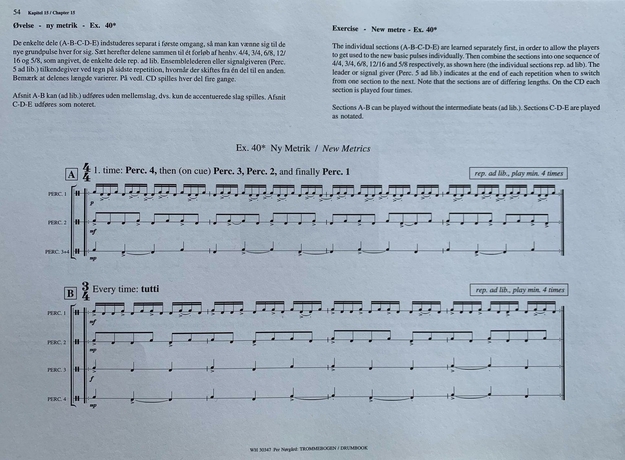Q: Can you start by telling us a bit about your background and how you became interested in gamelan music?
A: Yes. When I was in primary school and walked to school, I fantasized about putting my feet in a certain order. That's why I developed a series of steps with left, right, right, left, etc. It wasn't easy, but it was fun for me as I'm a pattern-minded person. Many years later, during my music studies in Rotterdam, I was taught by a Danish composer called Per Nørgård. He explained that if he plays a low tone and then a high tone, the opposite would be starting with the high tone and then playing the low tone again.This could be repeated endlessly.
This struck me, and he demonstrated it on a Balinese drum. That was my first realization of a recursive pattern, and I used it often in my compositions.
After finishing my music school, I studied musicology in Amsterdam, and during an internship, I encountered gamelan again. I played it for many years until circumstances led to us not being able to perform anymore.
During those years, many people from various backgrounds asked me for gamelan playing introductions. This led me to teach Suriname-Javanese gamelan in Alkmaar. Later, I joined a group of older Javanese men performing with shadow puppets called Wayang Kulit. They offered to sell me their old gamelan set, and I bought it.
I continued teaching in secondary schools and the Utrecht School of the Arts for 35 years, retiring recently. Gamelan is special to me because, like African music, makes use of distinct patterns, and I'm a pattern-minded person. Playing Gamelan also taught me me to think differently about European music, especially the perception of time and rhythm.
Q: Reflecting on your career, how do you feel your relationship to music connects to your own experience of neurodiversity?
A: I didn't know I was autistic back then, but now I see that my interest in structures may be related to it. I'm focused on details and patterns, and gamelan, with its repetitive patterns, appealed to me. It offers a limited set of patterns, which is great for people with autism.
Gerard van Wolferen and his two-dimensional interpretation of endless melody -

Q: For those unfamiliar with Gamelan, could you share insights into its composition techniques and their relation to patterns?
A: Gamelan has various types of music, such as war music, active music, and contemplative music, determined by tempo. The use of gongs, basic forms, and tuning contribute to creating patterns. Composers like Nørgård use basic principles to build complex sounds, and the endless melody principle allows creating large musical structures.
Q: How does Gamelan music relate to your exploration of predictability and freedom?
A: It's about variation and repetition. Starting with minimal material, you aim for maximum variation. Gamelan's cyclical nature allows endless variations in patterns and provides a challenge to composers. Everyone can play gamelan, but it takes time to adjust to its different rhythms, counting, and tuning. It's a mind-boggling experience initially, especially for Western music enthusiasts.
Q: Do you think everyone can play Gamelan? What do you expect people to experience when first playing gamelan?
A: Everybody can play Gamelan. The rhythms are different from Western music, and you have to play a lot of offbeat rhythms. In the first few years, I only wanted to analyze it, but it took me years before I could make a translation. Now, I can explain how we perceive things in Western music and how we would perceive this in Gamelan. So listening to it is not that difficult, but explaining the difference is like trying to explain the shortest route to the central station. It's simple but challenging to put into words. Initially, it's a mind-boggling experience, especially for Western music enthusiasts. Adjusting to the different rhythms, counting, and tuning takes time, but everybody can play. When people listen to a piece of music, their emotional state will change. Playing Gamelan is not improvising. Instead, people have the autonomy to choose their own pattern and repeat it to form group music.
To know more about Gerard's work and experience playing Gamelan, you are welcome to join us at our next A/artist event: Playing with Ethics and Rhythm at Mediamatic on 16th October 2023.


